Dr Elina Skripochnik PT, DPT, CSCS In Conversation with Edx Education (USA)
Dr Elina Skripochnik PT, DPT, CSCS In Conversation with Edx Education (USA)
Episode – 24- Heather Welch from Edx Education and today we will be in conversation with Elina Skripochnik PT, DPT, CSCS
Elina is a mom Dr specialising in Prenatal & Postpartum Women’s Health, Pediatric Physical Therapy. Elina is an active mom based in New York where she helps women stay active also specialises in paediatrics getting children active.
Today we are chatting to Elina, about, trends in children being active in the USA, the importance of children being active, your business and how it benefits families and children, also ways to stay active with children whilst home learning.
Here are the highlights from this episode:
{3:18} What inspired Dr. Elina to become a peadiatric physical therapist.
{7:05} The importance of children being active in their early years
{8:58} The importance of Tummy Time
{13:54} Dr. Elina’s private practice and the benefits for parents and children
{19:13} Tips to keep your children active
Episode – 24- Heather Welch from Edx Education and today we will be in conversation with Elina Skripochnik PT, DPT, CSCS
Heather Welch (00:01):
You’re listening to education experts with edx education. Education is evolving. Join Heather Welch for edx education, chatting with teachers, psychologists, parents, authors, creators, and other tons of experts to keep up with the trends and what’s happening from around the globe. This podcast series, mediates education discusses, home learning, school readiness, being creatives changes in education, discussing what’s next hands-on learning. Or as we like to say, learning through play
Heather Welch (00:33):
Edx education, and today we’ll be in conversation with Dr. Elina Skripochniks. Elina is a doctor specializing in prenatal and postpartum and women’s health and pediatric physical therapy. Elina is an active mum based in New York where she helps women stay active pre post. And during pregnancy also specializes in pediatrics getting children active today. We’re chatting with Elina about trends in children being active and the importance of children being active in the USA, her physical therapy practice and how it benefits families and children.
Also ways to stay active with children. Wife’s home learning, which a lot of us are at the moment in the UK and the USA welcome Elina. It’s wonderful. You could join us today. Can you introduce yourself to our listeners and tell them about your passion for physical therapy? Hello, my name is Elina Skripochnik and I’m a physical therapist from New York. I do mostly pediatric population as well as the prenatal and postpartum population.
Elina Skripochnik(01:32):
I received my doctorate in physical therapy from New York university and due to being, you know, in the middle of this great city, I had amazing volunteer opportunities and clinical experiences throughout my schooling. And that really helped me solidify the knowledge that I wanted to be a pediatric physical therapist right out of school. And then, you know, once it became pregnant with my daughter, I saw that there was also a big need for prenatal and postpartum women’s health care.
And so I started doing that as well, about four years ago, and I began working in preschool settings as well as outpatient settings, with doing pediatric physical therapy. And I was able to see and learn many different ways to approach various situations. So I feel like I was really able to get a wide, you know, depth of knowledge to the field. So are you still going into preschools at the moment or so I currently have a fully virtual schedule.
Elina Skripochnik (02:31):
All the children that I’ve been seeing have now been moved over to virtual therapy over zoom or Google meet. Oh, fantastic. So you can actually still see them over the, over this time. So is that when you, are you sit, what are you doing over virtual? You setting up obstacle courses, what are the fun things you’re doing for them? So I have, I have a wide age range.
With the younger children, we do obstacle courses because they seem to love that and they help set them up. So they have this feeling of when they set it up. And then when I do these obstacle courses and then what the older children, aside from the obstacle courses, we do a lot of, you know, general exercise that you would as a parents do. So again, this is a great way to connect with your children as well, you know, exercise with them.
Heather Welch (03:18):
Absolutely. What inspired you first to become a physical therapist, let alone a pediatric physical therapist
Elina Skripochnik (03:26):
From a young age. I knew I wanted to work with children and I found that as a physical therapist, I would be able to have a big impact on their development and growth. And just because of the nature of physical therapy, you tend to follow these children throughout the lifespan. So I really loved that. It wasn’t, you know, just like a one and done that. It would actually be able to see these children weekly and work with their families closely.
And I love the fact that I could form a bond with these families and with these children and see how they develop and help them gain new skills and watch their self-confidence grow. And for me, it was, it was a huge plus that this was like a long-term thing.
Heather Welch (04:05):
I mean, how young are the children, I suppose, do you go down to baby? So how do you actually have children from?
Elina Skripochnik (04:12):
Yeah, so I, I do early intervention, which is starting with babies. And then, and then it’s kind of grouped into babies to three years old and then from three to five years old, which is like, you know, preschool children. And then I have some school-aged children going all the way up to 15 years old.
And when it’s children, is it like a hip dyspraxia or hip displacements and things like that when it’s babies or what sort of things do parents come to you from?
So it’s a wide range of diagnoses. I’ve had, you know, things like crowds or syndrome, like really, really serious genetic disorders. And then it’s, it’s been things like, yeah, hip dysplasia torticollis is very common, which is, you know, where the muscles in the neck, might be weaker or shorter. So this is like a very common thing I see with babies.
Heather Welch (05:02):
I was going to actually ask you to explain that because I needed layman’s terms simple terms for that for me.
Elina Skripochnik (05:09):
So sort of layman’s terms, basically parents will start to notice their child might be facing in a certain, in one direction. Like let’s say they always look to the left versus the right. And you know, if it lingers for too long, you might start noticing a flat spot on their head because they tend to, you know, more time looking to one side. So the back of their head is leaning against a pillow or a furniture wherever they’re sitting. And again, as they get older, if the total cost isn’t addressed, you’ll see, you’ll see some hand preferences and then this could interfere with reaching other milestones.
So, you know, I feel like it’s best to treat it as early as, as you can, as early as a parent starts noticing I had preference, you know, reach out to a physical therapist and find out how you can address the issue and how you can get them to start looking the other way, how you can start stretching those muscles that are tight.
Heather Welch (06:05):
So could it be from birth as well? Do you get them from like, from maybe a more of a traumatic birth,
Elina Skripochnik (06:10):
It could happen through a traumatic birth. Yes. If you have, you know, sometimes children, their shoulders get stuck, so that might cause some trauma to the muscles and then they might, you know, have that head preference. It could definitely be something that happens from birth. It can also be that happens, you know, early on, you know, a mother can be breastfeeding on one side and sometimes the child just has a preference for one side and they ended up just looking toward that side or, you know, they can be sleeping on their, on their back and their head can always face a certain way. And that could also create that preference
Or if there was maybe triplets and they’re all squashed in, I’ve never had twins myself. So I always think I had big babies, I think, well, I couldn’t have had two of them together to be honest. But listen, as a physical therapist, you are passionate about keeping the world healthy. I’d say, well, even women and children, can you tell us why it’s important for children to be active in their early years? Because I think that’s sometimes where we miss on when they’re babies.
Elina Skripochnik (07:15):
Yeah. So I think that this is, you know, as soon as it can, this is the perfect age to start building healthy habits, because really this is the time when the children developing rapidly and learning the most at this age. So they are forming all these important neurological connections. And the earlier you begin to instill these healthy habits, the more likely they will continue them throughout their lifestyle. And, you know, it’s so important for children to be physically active because from the physical aspect, there’s so many positive benefits, but there’s also huge benefits on their mental and psychological health.
You know, touching upon the physical standpoint, it helps improve cardiovascular health. It plays an important role in forming stronger bones. It helps build endurance and overall muscle strength. So really these are things you want to be working on as soon as possible. And then from the other, I mean the mental health end and that the cognitives and studies have shown that physical activity specifically activity that engages, you know, goal oriented skills, things like obstacle courses, they have positive effects on children’s cognitive abilities. So children are able to improve executive functions and goal oriented behaviors due to the fact that they practice, you know, all these physical activities while also having a goal in mind.
Heather Welch (08:37):
So from a baby, would this be as simple as tummy time or even, you know, try, even if they don’t like it. I know one of my sons, for example, had quite bad colleague or reflux and he couldn’t stand being on his tummy. He really just disliked it. And he sort of just liked being in quite upright position. So would these sort of like little things would be, they’re more important than we think?
Elina Skripochnik (08:58):
Yes. So tell me time is so important. And you know, a lot of people assume that tummy time is just placing your baby on their stomach on the floor, but you can do tummy time reclined like this. If you just said your baby was colic and had reflux, so you could have done tummy time on an incline so that he wouldn’t be flat on his stomach, but he would still have, you know, that gravity kind of weighing down on his neck. So he’d have to pick his head up
Elina Skripochnik (09:23):
A small pillow, I suppose.
Exactly. There are so many ways to modify tummy time to work for your child, that starting a students. But I mean, I tell people to start, as soon as they’re born, you know, put them on your chest and speak to them and have them look at you and you can, the best way to do that is you can adjust yourself, put yourself on an incline. If the baby can’t be fully flat. And so it’s like the first way you can engage your child physically.
Heather Welch (09:51):
So when do you start doing sort of, I know that I’ve seen, I first got introduced to you on Instagram. You put this amazing obstacle courses that you put chores that you have children go through and they’re quite young. I’m surprised their balance and coordination is amazing. So I mean, how, how young do you start?
Elina Skripochnik (10:08):
I start pre crawling. When I’m teaching crawling, I start, you know, placing things in their path so that they can figure out ways how to get around these things, how to get over these things. So I feel like it helps with crawling if you place your leg in the baby’s way and they want to get to a toy, that’s right, like a mini obstacle you’re putting in their way. And then you just build it from there. You know, as soon as they start walking, you can start having them walk around obstacles and then walk over obstacles. And as their skills grow, you can make these courses more and more difficult to challenge their skills.
Heather Welch (10:44):
It’s funny, you know, it sounds like the simplest things sometimes are the best for their balance and coordination. Isn’t it like, just as you said, you just put your foot in the way and have to crawl over it. That is one of the simplest things, but it’s effective, isn’t it?
Elina Skripochnik (10:58):
You don’t need anything crazy. You don’t need any special equipment. You really just need to have the idea in mind and you can really use anything in your house too, to help yourself.
Heather Welch (11:08):
Well, I suppose that’s what people have been doing for the last 12 months with a lot of, you know, you know, something, that’d be interesting. I’d love to know the trends. If you know, what’s happening in the USA with children being active, you finding a decline with, you know, we’ve had an unconventional school year due to home learning for a lot of it, many estates in the UK and USA, have you found, or
Elina Skripochnik (11:33):
There has definitely been a decline. There was actually a study conducted in the, you know, the early months of COVID where the initial shutdown of schools and, physical activities for children. It was a, it was like a parent report. So parents, almost 50% of parents reported that their children had much less physical activity and a lot more sedentary. And you can imagine now with children being, you know, doing virtual school or with having to social distance where sometimes, you know, they can’t be in gym and do the physic physical activity, they would normally do.
There is definitely a large decline in physical activity, especially now in, in States where it’s colder and you can’t really go anywhere. People are stuck at home. And if you don’t really know how to make your home into a physical activity, friendly area, it can be much easier to just, you know, forget about it. And kind of just, you know, when it gets warmer, we’ll, we’ll pick up
Heather Welch (12:30):
Elina. If they don’t know how to make an office, obviously they can eat. They need to check out your Instagram. You can have a look at what you do. Cause yours is all in a lot of that was indoors, isn’t it?
Elina Skripochnik (12:39):
Yes. Most of it is endorsed because right now in New York it’s freezing and it’s snowing and we can’t go anywhere. So right now it’s about 36 degrees. We have snow on the ground and ice on the ground. It’s pretty good.
Heather Welch(12:55):
We’re actually where, okay. This week we’re actually finally got a warmer week. So we’re coming into spring. It feels like we’re actually coming into spring. But I saw what I saw this week is in the USA is Texas. I mean, that’s got a huge cold snap. Doesn’t hurt.
Elina Skripochnik (13:09):
Yes. I mean, there was, it was, I know friends in Texas and yeah, they they’ve been having issues. People’s houses have gotten tremendous leaks just because they weren’t really prepared. And it’s very unfortunate. It’s, it’s, it’s different for them. You know, they’re used to nice warm weather and then this happened,
Heather Welch (13:26):
I know Elina. I went out into the middle East for a long time and you don’t have snow obviously, and this is manmade. But I remember my friend telling me that when I moved back to the UK, is that if it’s going to snow run, your taps permanently was, was the only piece of advice they gave me. So they don’t freeze over. So I can get some water the next day. But this, and I suppose one thing that would really love to know more about is your practice and how it benefits families and children. If you could explain a little bit more
Elina Skripochnik (13:54):
Well, of course, so I’m a private physical therapy practice currently, which means I, I don’t take insurance. So I work for myself, which is great because I don’t have any time constraints. Insurances like to put time constraints on physical therapy, but I work with young children, mostly babies to school, school-aged children. And I work with a wide range of children from children who have severe disabilities and who require more frequent sessions in order to reach goals to children who might just have some mild weakness or coordination, goals.
They just need some extra help getting active. So it really I’ve seen it all. And recently, you know, because of the weather and because of COVID, I started virtual playgroups that I have extended to children of all abilities. So even if you don’t have any goals and you just want your child to be active, I’ve created groups for children depending on their goals and their skills, their age. And we just do obstacle courses or with older kids would do group exercise sessions. And all of the sessions are created with, with a developmental components in mind.
Heather Welch (15:03):
That’s fantastic. That’s really nice actually, to actually build that community spirit as well, like to have those group sessions and not just one-on-one. So you can, I don’t know, baby, get community be competitive if they’re older against each other or anything has set some challenges. So that sounds like a lot of fun. What’s the main thing you’re finding now in the USA that parents are bringing their children, is it no.
If you look at all of the statistics, is it because there’s a decline in say, parents spending time with the children and doing those basic, taking them to the park, doing these basic running, teaching them how to ride a bike, just because we’re so time poor with work and all these other things that we do have this club culture, where we sort of push things out to other people. Is that a nice way to say it at times?
Elina Skripochnik (15:50):
I mean, definitely. No. Unfortunately the truth is that a lot of parents are so busy right now. And especially now with having to take your work home, you’re basically expected to work all the time, right? Because you know, a lot of children are, are kind of left, you know, to their own means. And while I do think that free play is so important, it helps children’s develop their own skills and it helps children explore. I do think that sometimes you do need structured activities in order to kind of help you, you know, set a goal and reach that goal. And now whether it’s due to lack of time or because a lot of places are still closed.
In New York right now, they just started opening up hockey and things like that. So a lot of sessions, a lot of activities like gymnastics and dance are still not fully operating. So a lot of kids who are going to these afterschool programs or going to, you know, extracurricular activities, afterschool, or even during school, like school sports, some of these things are still not happening. So all of these abilities that the children have had for physical activity have kind of been diminished. And, you know, some parents might not even know how to engage their children in physical activities.
Heather Welch (17:07):
That’s very good. What about, so in a lot of children, probably in New York, if they’re in inner city, New York, I live in well, less of a backyard. They wouldn’t as a garden, they wouldn’t have somewhere to run and play apart from the park. Would that be correct?
Elina Skripochnik (17:19):
Yes. So I am lucky to be in a suburb 30 minutes outside of New York city proper. So I have a yard, but I, I know my close friends, they live in these big apartment buildings where, you know, they would usually take their children to the playroom and the apartment buildings. But now that they’re closed, you really don’t have much, you know, much to do unless you go to central park or any of the smaller parks that have now also opened up. I know before the parks weren’t open. So children really had nowhere to go. They closed everything
Close. Yes. The proxy close because, you know, they didn’t know this was early on. They didn’t know, you know, how far the spread would go. And then a few months ago they did open up the parks. So children were able to, to go back to that,
Heather Welch (18:07):
That’s really nice that they’d be able to see, you know, even past their friends or even see other children. It’s quite hard when they’re being in such a severe lockdown, to be honest. So your school’s back as well, or they’re just starting to open up.
Elina Skripochnik (18:20):
Schools are back a lot, actually a lot of schools have begun opening up, but I do know the children on my caseload. They have all elected to do a full year of virtual school. So because they are doing virtual school throughout the whole year, I have them doing virtual therapy the whole year. And for me, it’s easier because I’m also home with my daughter who has taken the year off of school due to the pandemic. So you read this,
It’s just sort of a double-edged sword at times. Cause it’s really nice to spend time with your children. I know for myself, it’s really nice to have my children at home, but then sometimes with the juggle of work, you sort of, it’s like, Oh no, what are you going to do? Type thing. It does make it a little bit hard, but it does make you look at your priorities and your perspective a little bit as well, Elina, with so many parents homeschooling and being at home and maybe having a minimal space. Do you have any tips for parents to keep their children active?
Elina Skripochnik (19:18):
Yes. I love using things that you already have at home when you don’t have much space, things like pillows and socks and furniture and especially painters tape. I’ve actually posted a few obstacle courses using painters tape, and you can leave the painter’s tape on the floor or even on the furniture and then assign different different activities to each little station. I get, if you check out my Instagram, you’ll see how I assigned different activities to different areas of the obstacle course set up with the painter’s tape.
I have also been using my Edx step a logs and stones a lot in creating obstacle courses. And again, those things are, are something you can leave up for a while and have your challenges, you know, visit them throughout the day. You don’t need to make them do a whole bunch of repetitions. In one time you can have them do two here, two, there set up a little puzzle.
Heather Welch (20:08):
Maybe they can, you know, take a piece of the puzzle, go through an obstacle course and then complete the puzzle that way. And that way you get a few repetitions of, you know, this obstacle course that they do while they’re trying to complete the puzzle. When you’re watching TV, you can have your children do exercise during the commercial breaks. If you’re giving your child screen time, you can also have them do things like tall kneeling or half kneeling where you’re working on their core strength while they’re doing their activities on the tablet. And again, there was a study that showed children who do aerobic exercise, do have better cognitive function. So you’d be working,
Elina Skripochnik (20:48):
You know, on cognitive function through both. Do you know if you have an educational activity on a tablet, as well as having some exercise while you’re doing whatever you’re doing on your tablet, a healthy heart and a healthy mind that you’ve got a really great infographic on your Instagram, which is keeping kids active during the pandemic. And I see that there you’ve got different age groups. So if someone wants to have some activities as well, they can jump onto your Instagram. And you’ve got so under one year and you’ve got a toddler years and older children.
There are some great activities in the infographic that they can jump on and have a look at. Yes, exactly. It’s very helpful for now, for the times we’re in right now, best work for your child and for you. Fantastic. And your email is Alena dpt@gmail.com. Fantastic Elina, thank you so much.
Heather Welch (21:36):
It’s wonderful having you here today on education experts. Now I love it. That you’ve got your passion and your education and you’ve put it together and you’ve, and, and you’re able to do it by being a mum, be a supermom as well. So you’ve been able to become a doctor specializing in women’s health and pediatric physical therapy. And I love that you’re doing the preschools, but not preschools.
You’re going to schools when they’re open. You’re able to, but also these, these community groups sound fantastic for people to join. So if anyone has any questions for Lena, please get in touch and I’ll make sure that there’s links when we put up the podcast as well. Thank you so much for joining us today.
Heather Welch (22:16):
There are so many exciting developments happening right now in education edX education would love to hear. So do you get in touch with subscribe to our podcast, which is available on Apple beans, Spotify tune-in and so many more, this podcast series is brought to you by Heather Welch media X education. As she’d like to say, that’s create lifelong learners.

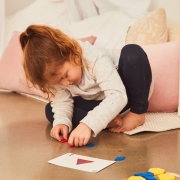
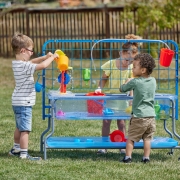
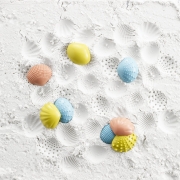 Edx Education
Edx Education Edx Education
Edx Education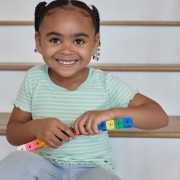
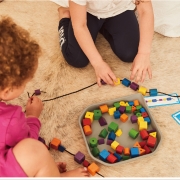
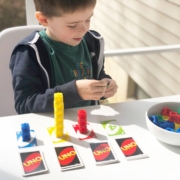 Edx Education
Edx Education
